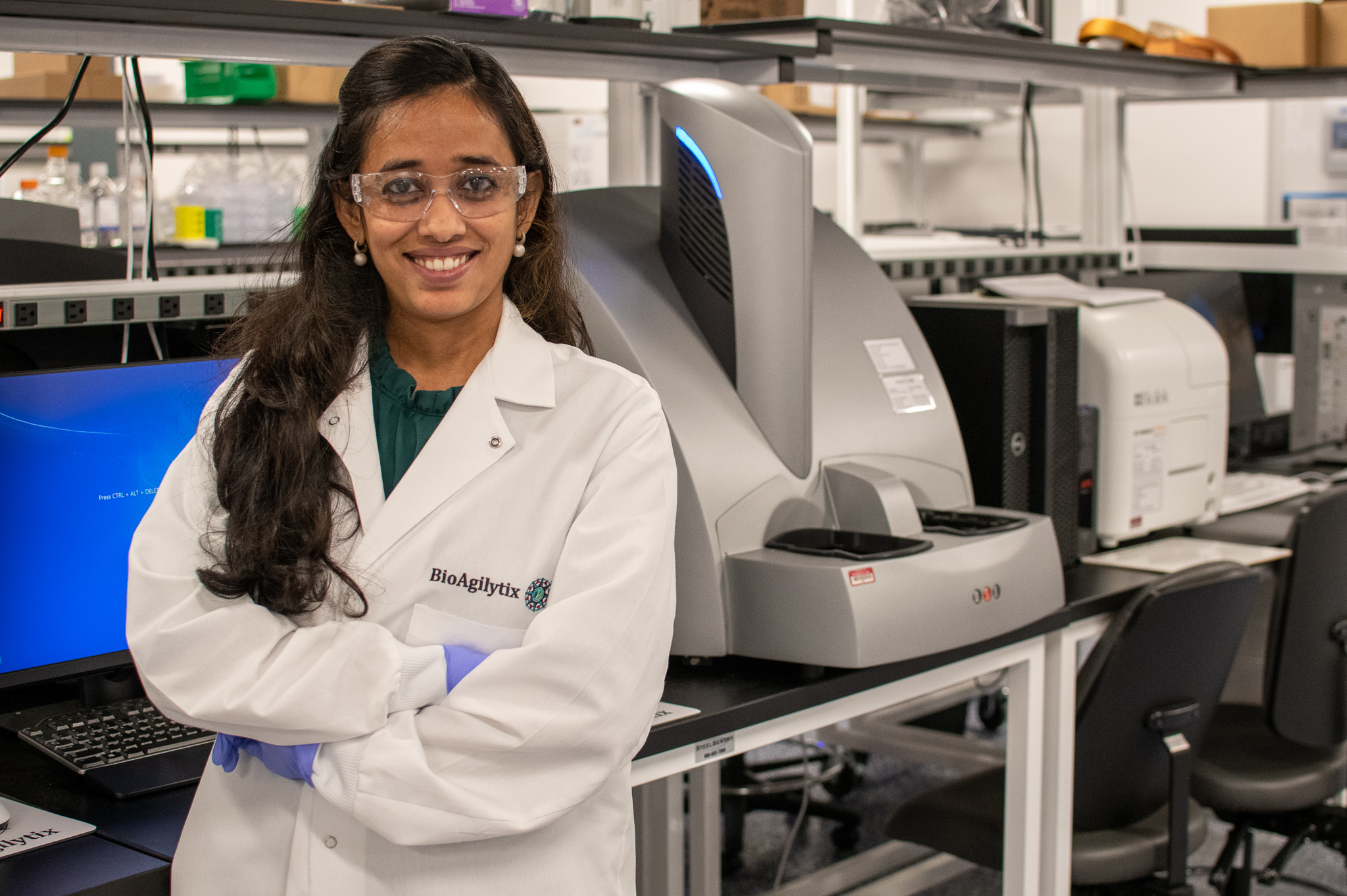Flow Cytometry in Bioanalysis: Application, Utility and Recent Advancements
Flow Cytometry in Drug Development
Flow cytometry is a technique that is used to analyze multiple characteristics of single cells. These characteristics include cell size, cytoplasmic complexity of the cell, as well as expression of cell surface and intracellular proteins. This unique technology utilizes fluidics, optics, and electronic components to interrogate each cell by lasers as it flows through the sample stream. The dispersed light and emissions from excited fluorophores are collected and directed toward photodetectors that isolate specific wavelengths and convert them to digitized signals in the form of numerical data, representative histograms, or dot plots that can be used for further analysis.
Flow cytometry is heavily utilized to acquire a wealth of important data in the drug development process from early research and discovery, through nonclinical and clinical phases and beyond. It is commonly used for immunophenotyping assays that provide information on the composition of mixed cell populations and enumeration of different types of immune cells, such as T cells, B cells, NK cells and others. Immunophenotyping can help guide patient selection for clinical trials or interrogate impact on cell populations from immune therapies, vaccines, or other therapeutics.
Another important utility of flow cytometry in bioanalysis is its use in receptor occupancy (RO) assays. RO assays generate pharmacodynamic data by evaluating the binding of therapeutics to their targets on the cell surface. This data set is important to understand the PK/PD profile of the therapeutic and can be important for determining proper dose selection for nonclinical and clinical studies. Another subset of flow cytometry assays that are commonly developed in bioanalyses are target engagement assays that measure receptor interactions and downstream effects of receptor signaling. Additional applications include measurement of various cellular proteins such as intracellular cytokines, assessment of cell proliferation, activation of certain cell subtypes, and phosphorylation of protein for assessment of kinase signaling.
As drug development continues to advance with various cell therapy strategies, flow cytometry has been heavily relied upon to monitor the phenotype and function of these modified immune cells. An example of this is the use of flow cytometry to monitor and enumerate CAR-T cells and to provide information on the functional characterization (e.g. proliferation, activation or suppression) of these living cells. Flow cytometry can also play a valuable role in assessment of engineered cell products during the manufacturing process.
These are only a few applications that utilize flow cytometry technology throughout bioanalysis and can be a source of pivotal information needed to further the drug in the development process.
Recent Advancements in Flow Cytometry Technology
As therapeutic modalities have continued to become more innovative and complex, the need for advanced technologies has increased. Traditional flow cytometry using up to 8 colors (10 parameters) has become routine in bioanalysis. Instruments with capabilities for multiparameter flow cytometry have become the new standard with capabilities to develop assays with 20+ cell markers that allows for a deeper resolution of cell populations and biomarkers. Complex panels generate large data sets that require in-depth analyses, which has led to the development of several software applications that have helped make data analysis more rapid and automated.
The single cell technology landscape continues to evolve with the addition of sophisticated technologies that have added advantages and enhanced detection capabilities. Continuous advancements in cellular technologies have allowed for acquiring and analyzing large data sets from a single sample and can provide copious amounts of information at the cellular level in support of progressing a therapeutic through the drug development process.
Partner with BioAgilytix
BioAgilytix is committed to providing the highest quality bioanalysis for our customers’ flow cytometry assessments, which we do by leveraging a variety of technology platforms. The advanced capabilities of these platforms are only enhanced by the skill of our seasoned scientific team, who are well experienced in optimizing flow cytometry for each customer’s specific needs.
References:
- Brown M. and Wittwer C. Flow Cytometry: Principles and Clinical Applications in Hematology. Clinical Chemistry 46 (8): 1221-1229 (2000)
https://academic.oup.com/clinchem/article/46/8/1221/5641363 - Liang M., Scwickert M., Shneider A1K. Et al. Receptor occupancy assessment by flow cytometry as a pharmacodynamic biomarker in biopharmaceutical development. Cytometry B Clin Cytom 90(2): 117-127 (2016)
https://www.ncbi.nlm.nih.gov/pmc/articles/PMC5042057/ - Sarikonda G., Pahuja A., Kalfoglou C. et al. Monitoring CAR-T cell kinetics in clinical trials by multiparametric flow cytometry: Benefits and challenges. Cytometry B Clin Cytom 100(1): 72-78 (2021)
https://pubmed.ncbi.nlm.nih.gov/32573972/ - Mitra-Kaushik, S., Mehta-Damani, A., Stewart, J.J. et al. The Evolution of Single-Cell Analysis and Utility in Drug Development. AAPS J 23, 98 (2021).
https://doi.org/10.1208/s12248-021-00633-6
